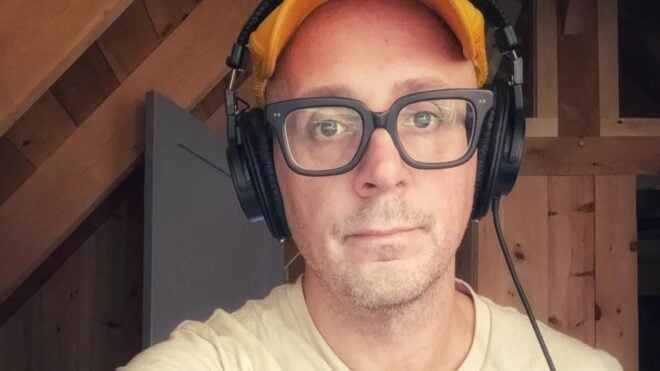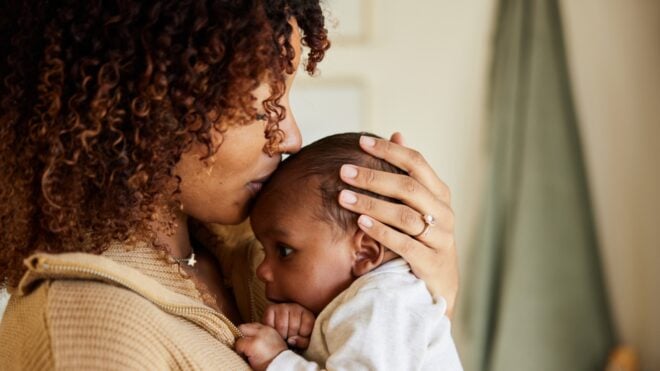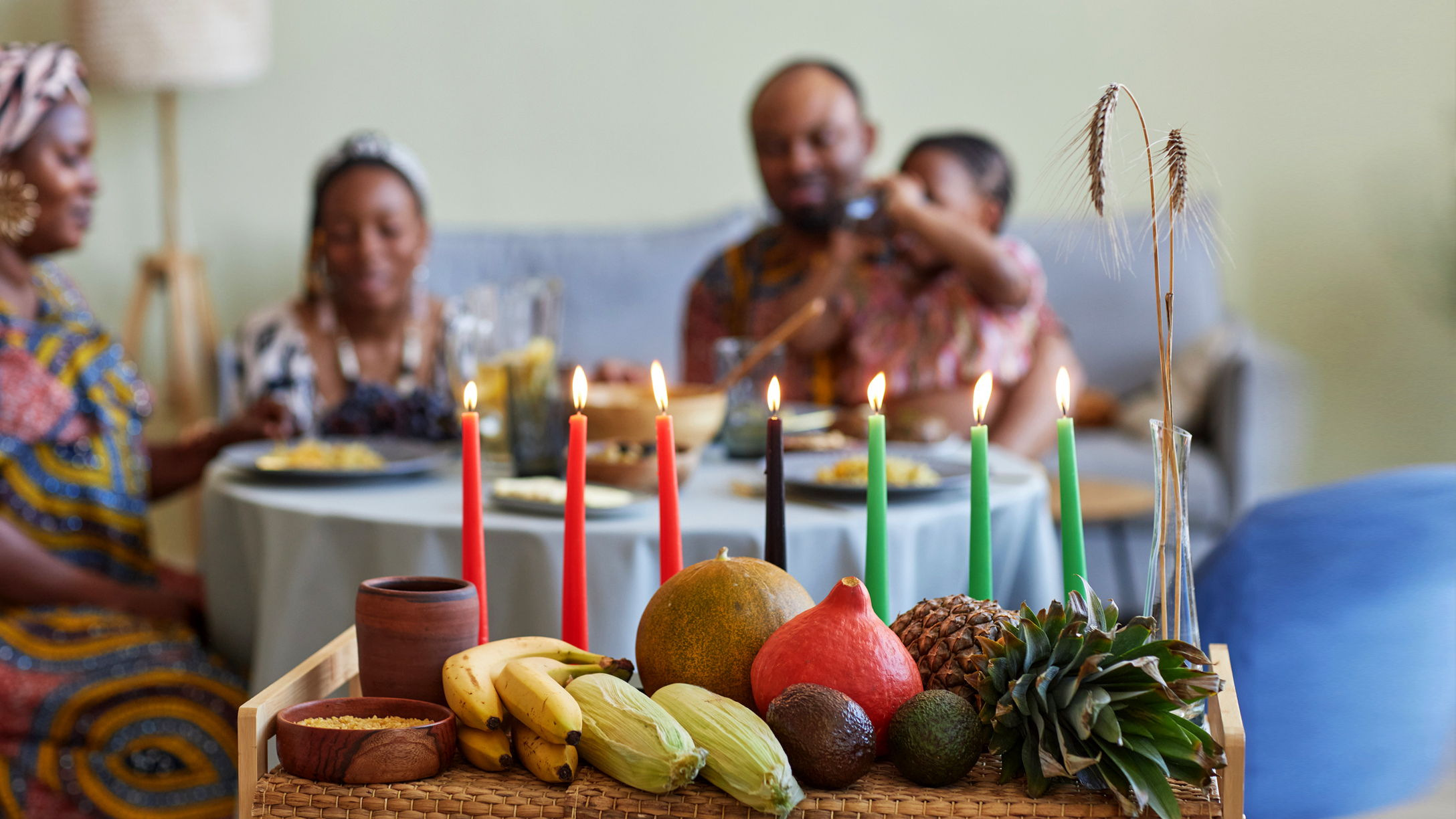
In this article
Many families will soon be putting away the stockings, ornaments, and hanukiahs and closing out the year by displaying their Kwanzaa Kinara. If you're asking, “What is Kwanzaa?” and have questions about the holiday — whether it's ideas on how to celebrate Kwanzaa, when it takes place or how it fits into Black history — you've come to the right place! We're breaking everything down, discussing how the holiday came to be, learning who celebrates, and discovering the ways in which Kwanzaa can be observed.
What is Kwanzaa?
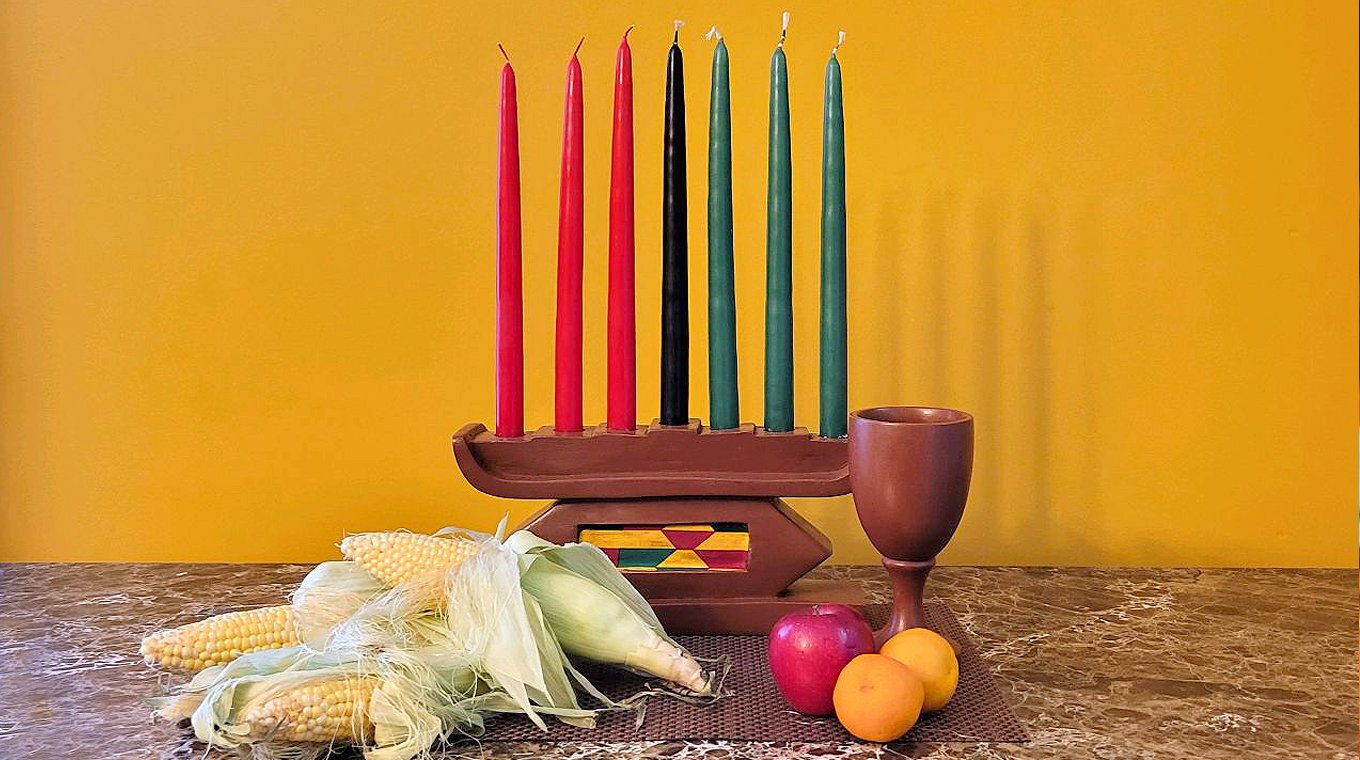
The Swahili word Kwanzaa, meaning “first fruits,” is a non-religious, seven-day holiday celebrated in the United States by Black Americans. Beginning the day after Christmas, Kwanzaa is based on seven principles designed to celebrate African American culture, ancestry, and heritage.
The holiday was founded in the sixties by author Dr. Maulana Karenga, as a way to celebrate Black people, honor their ancestors, and acknowledge their history. Karenga based the holiday on traditional West African harvest festivals. Kwanzaa is guided by these seven principles; one for each night of the celebration:
-
December 26: The first night of Kwanzaa celebrates unity or Umoja.
-
December 27: Kujichagulia or self-determination is celebrated on the second night.
-
December 28: Ujima, celebrated on night three is about working together.
-
December 29: On night four, Ujamaa or cooperative economics is front and center.
-
December 30: The fifth night of Kwanzaa focuses on Nia or looking forward to the future.
-
December 31: Creativity or Kuumba, is the focus of the sixth night of Kwanzaa.
-
January 1: Imani (faith) is recognized on night seven.
On the last night of Kwanzaa, Karamu (a feast) brings the Kwanzaa celebration to a close.
How to celebrate Kwanzaa with your family
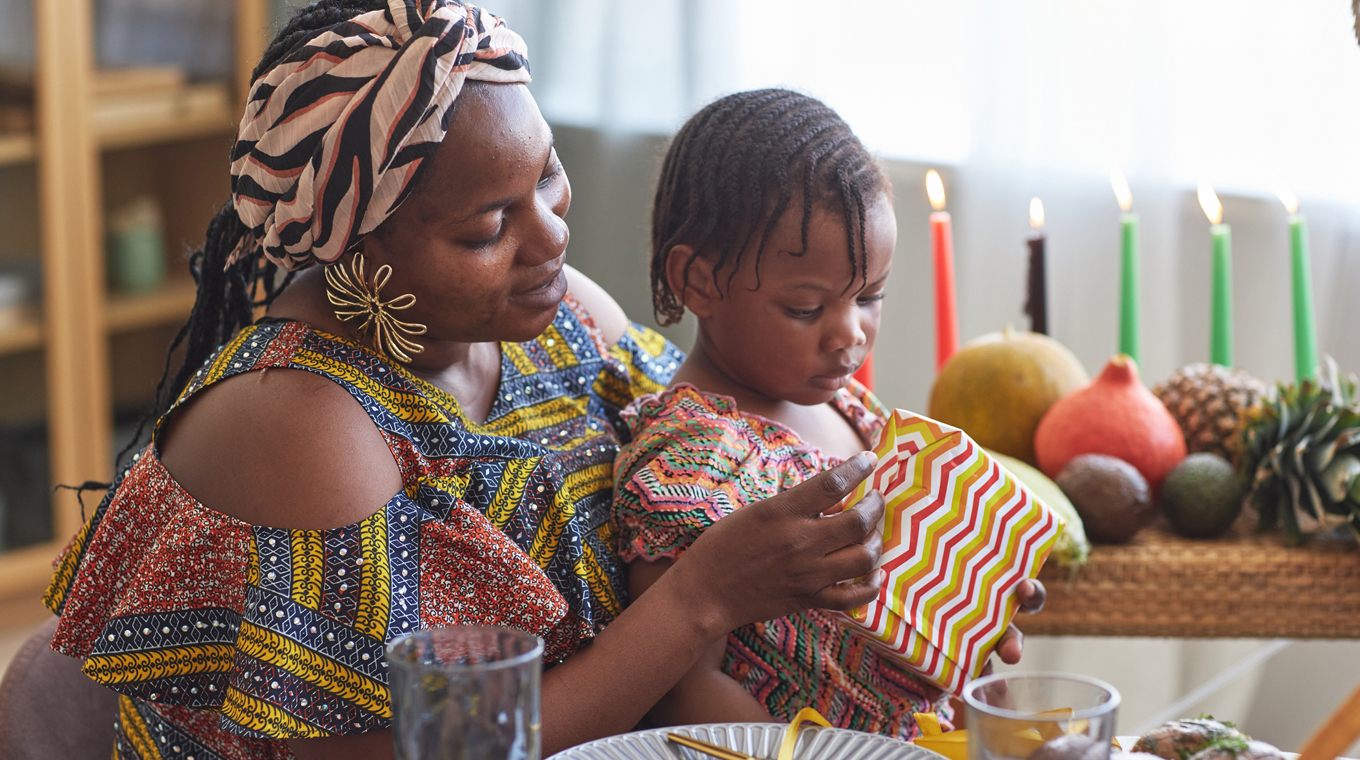
So what is Kwanzaa's traditional greeting? "Habari Gani!" which translates to "What's happening?" in Swahili, and it's how every night of celebration begins. The answer to the question is, "The principle of the day!"
The Mishumaa Saba, the lighting of the seven candles of the Kinara (candleholder) occurs each night of Kwanzaa. The center candle is black to represent the people and community members, while the three red candles on the left represent the struggle, strife, and bloodshed of our ancestors. The three green candles encourage us to look toward the future with hope.
Elements of the Kinara display
The Kinara holds all seven candles representing the principles of the holiday, but in addition to the Kinara and the Mishumaa Saba candles, there are five other symbols present during Kwanzaa celebrations that represent African culture:
-
Mazao: This is the Swahili word for crops that align with West African harvest celebrations.
-
Mkeka: The Kinara is placed upon a mat or Mkeka as a symbol of the foundation of a culture.
-
Muhindi: Corn is representative of the children within a family, one cob is displayed for each child.
-
Kikombe cha Umoja: The Unity Cup symbolizes connection and honors our ancestors.
-
Zawadi: The final day of Kwanzaa is celebrated with a great feast and an exchange of gifts.
A great way to incorporate the seven principles of Kwanzaa throughout the week is to support Black-owned businesses. This can be done online or in person; purchasing from Black-owned bookstores and restaurants, in particular, are ideal for Kwanzaa celebrations.
Researching and reading about your family's ancestry, listening to and playing West African music, and watching TV shows and movies by and for Black families make for a meaningful Kwanzaa.
Consider a family game night highlighting games created by Black entrepreneurs like #CultureTags or Jollof War, The West African Party Game from Kulture Games.
Kwanzaa celebrations will continue to evolve
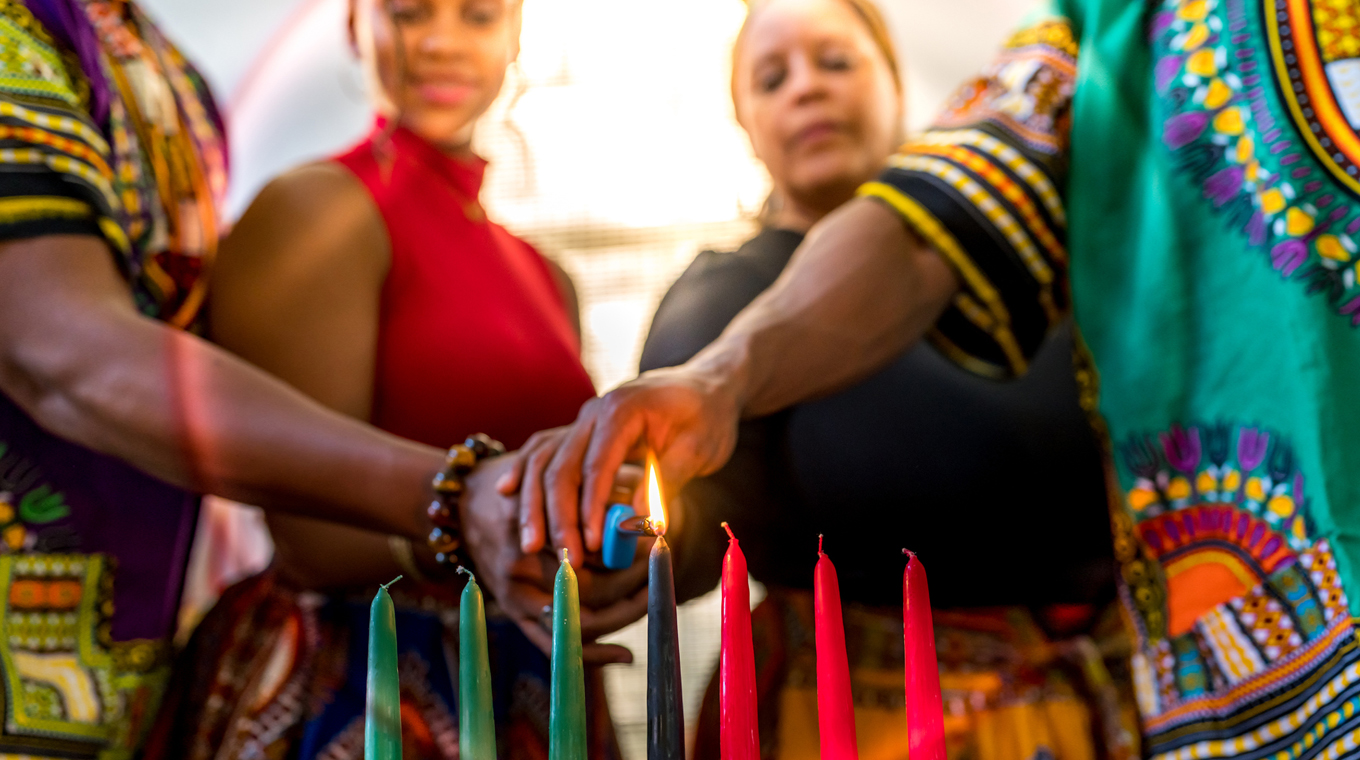
There are quite a few misconceptions about the Kwanzaa holiday, which is understandable as it's relatively new and not as widely celebrated as the other winter holidays.
What many don't realize is that there are no set Kwanzaa traditions. Often the way people celebrate is a combination of personal preference and snippets from West African culture. This is the beauty of the holiday; it can be whatever we want it to be.
As the desire for a sense of togetherness and connection in the Black continues to grow, especially in the wake of recent events of the last few years, it's likely that Kwanzaa will continue to gain in popularity.
"When our ancestors landed in the Americas, languages, and cultures were lost. We are descendants of survivors. The truth is, Kwanzaa doesn’t need a traditional menu, and its celebrations and rituals can be elaborate or minimal," Kwanzaa Culinarians founder, Sanura Weathers wrote in Simply Recipes. "The people who celebrate it are reconnecting to their African heritage and sharing their varied experiences."


